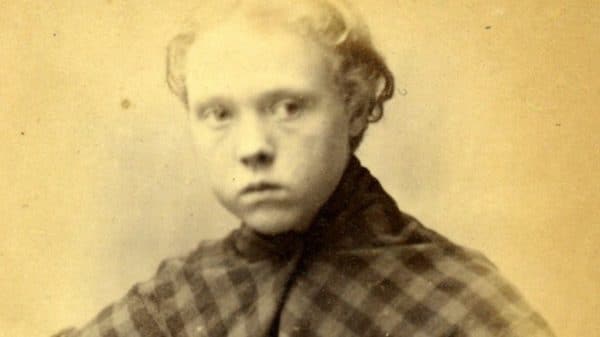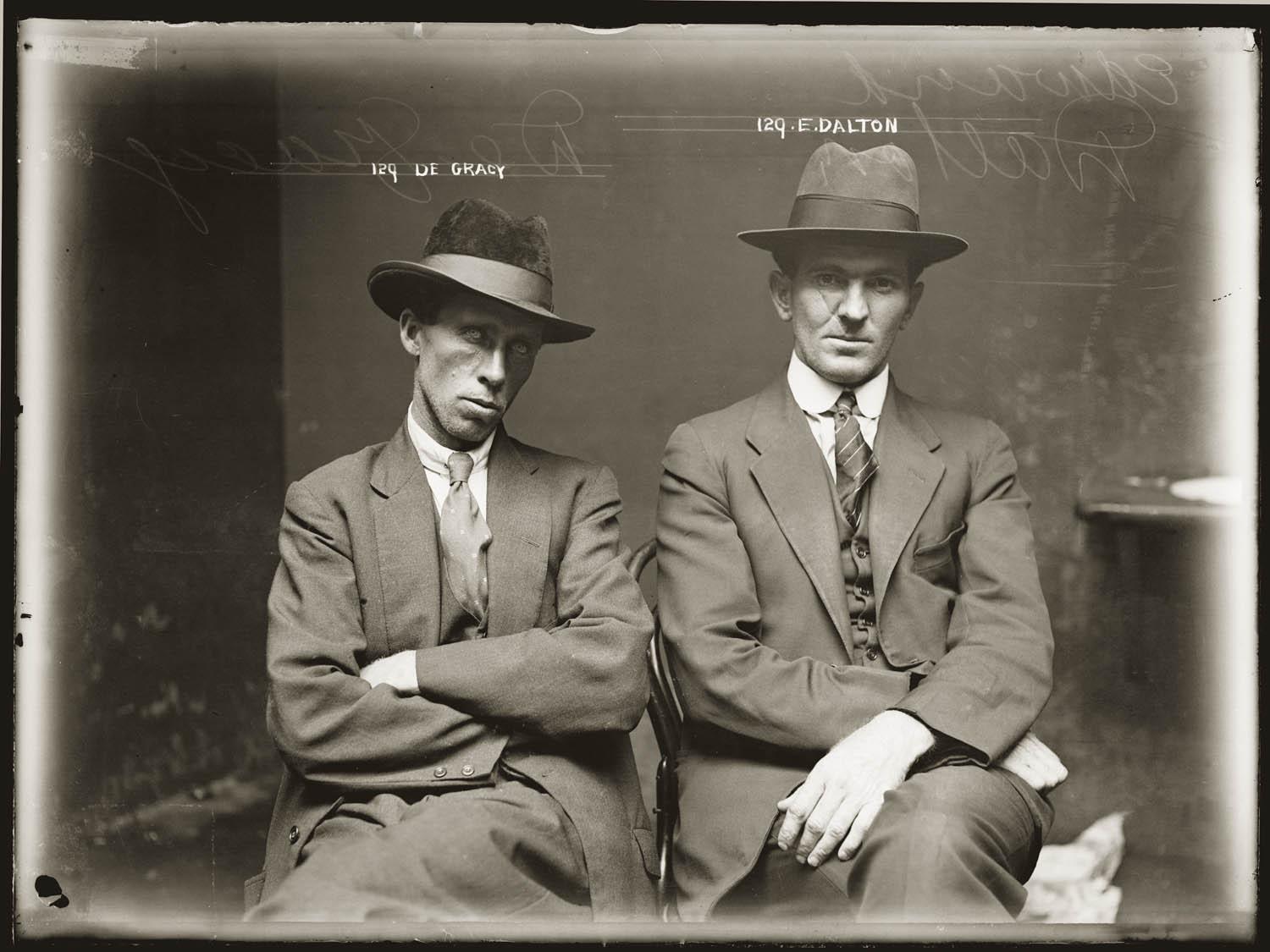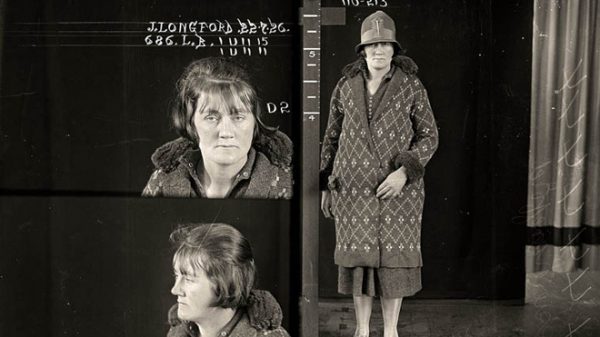Way, way back in the day you could be arrested for almost anything, especially if you were poor or a person of color – oh shit, nothing’s really changed then. Check out these mug shots from the early 1890’s.What’s interesting about these photos is the personality that comes through most of them. They also make me wonder how the rest of these human’s lives turned out after they got out of jail…
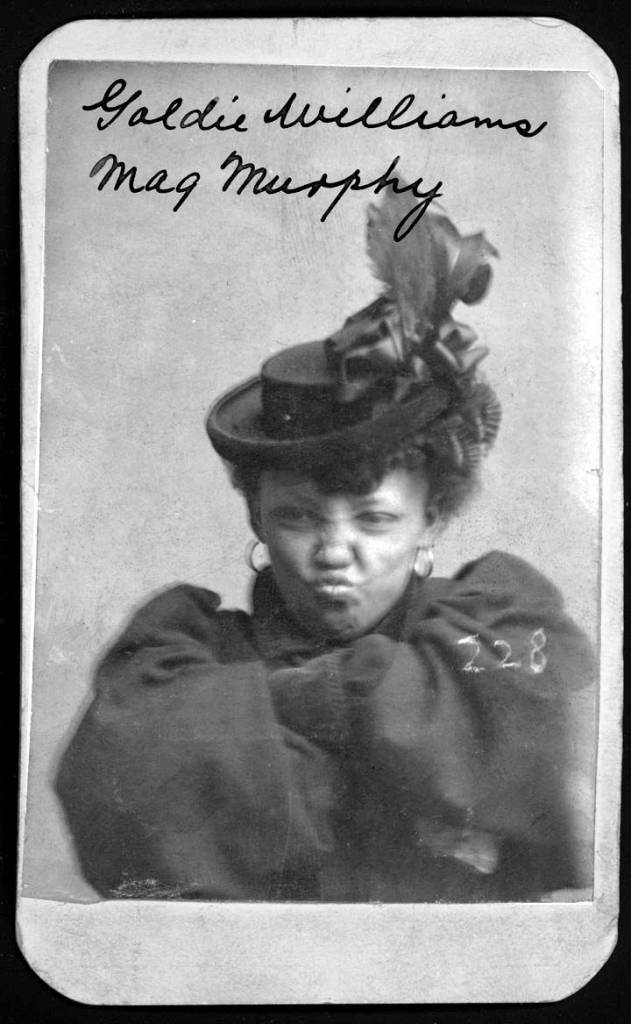
January 1898
Goldie Williams defiantly crossed her arms for her Omaha Police Court mug shot. Arrested for vagrancy on Jan. 29, 1898, Williams, also known as Meg Murphy, stood only five feet tall and weighed 110 pounds, according to police records. She listed her home as Chicago and her occupation as prostitute. According to her arrest descriptions, her left index finger was broken and she had a cut below her right wrist. Williams sports an elaborate hat with satin ribbons and feathers. She also wears large hoop earrings.
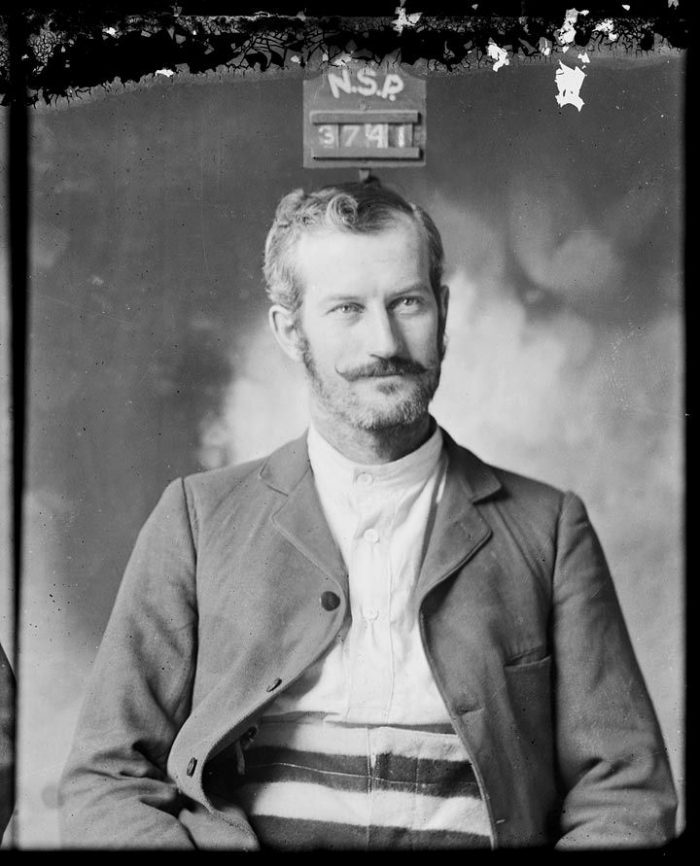
December 1899
A double murder rocked the tiny town of Odessa, Buffalo County on the night of Dec. 4, 1899. Lillian Dinsmore was found dead in the kitchen of the house in which she and her charismatic husband Frank L. Dinsmore boarded. Fred Laue, the boarding house owner was shot in his bedroom. The Dinsmores had been married only a year. According to Fred Laue’s wife, Mr. Dinsmore became obsessed with her and seduced her. Unhappy in his marriage, Dinsmore supposedly plotted to kill his young wife and murder Laue. After she was murdered, Lillian Dinsmore’s brothers accused Dinsmore of using hypnotic powers on their vulnerable sister. After hearing the accusation, Mrs. Laue also claimed to be a victim of Dinsmore’s hypnotic influence. The Dinsmore case became a newspaper sensation. He vehemently denied all the charges even after the guilty verdict was read, and he was sentenced to death by hanging. Dinsmore’s lawyers appealed the sentence and Governor Dietrich stepped in to commute his sentence to life in prison. Dinsmore posed for his mug shot at the Nebraska State Prison wearing a simple white cotton shirt, sack jacket and striped prison-issue pants.
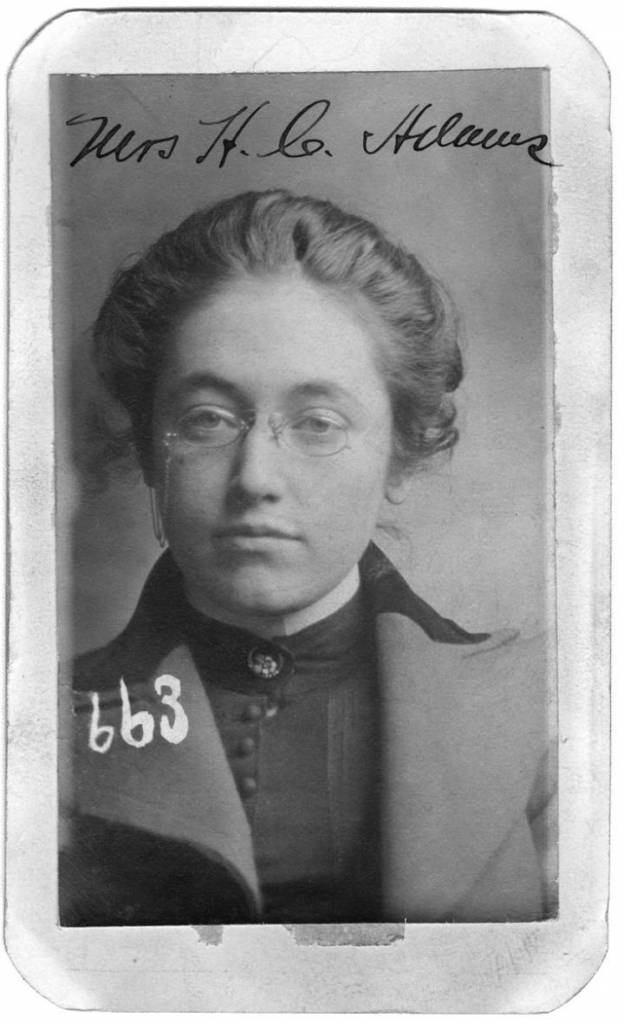
April 12, 1900
Mrs. Adams was arrested in Omaha for blackmail. She listed her residence as Palisade, Nebraska, and her occupation as prostitute. The police record describes her as five feet, one inch tall with a medium build and a sallow complexion.
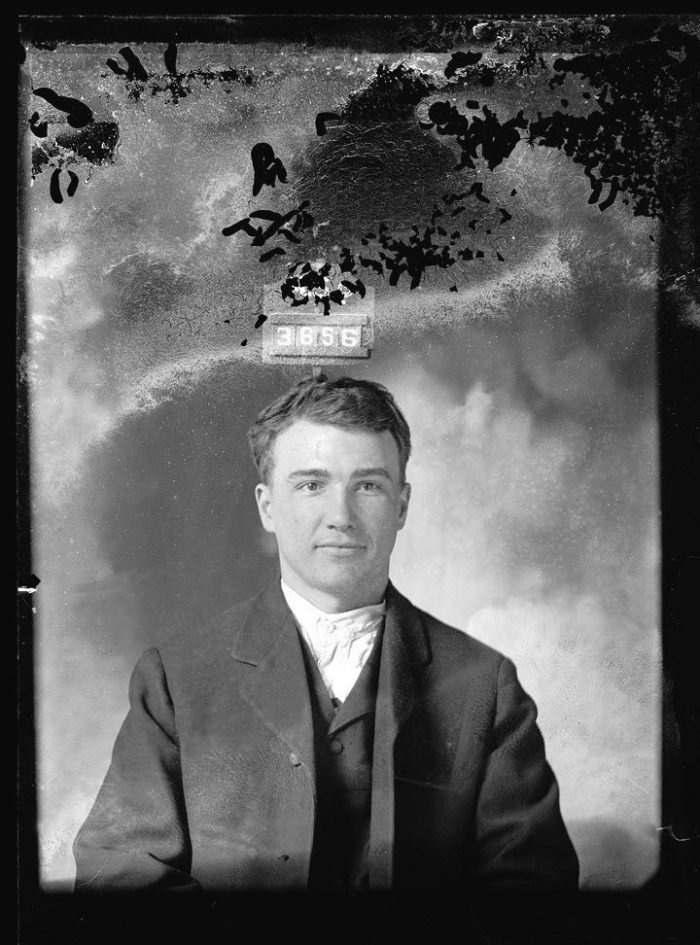
1901
Bert Martin was sentenced for stealing a horse in Keya Paha County. At the prison, Bert worked in the broom factory. One day, Bert’s cellmate of 11 months told the prison authorities a secret: Bert was really a woman named Lena Martin. In sparsely settled Keya Paha County, Lena’s masculine appearance allowed her to find work as a cowboy. Prison records show Martin was transferred to the women’s division on Sept. 22, 1901. When Martin was sentenced, a woman, believed to be Martin’s wife stood beside him. Martin was sentenced to two years. The Governor of Nebraska Ezra P. Savage said of her: “a sexual monstrosity, unfit for association with men or women even in a penal institution, and on the solemn promise of its aged mother to care for it and guard it, and that prison morals imperatively demanded its removal, sentence was commuted to one year, six months, Feb. 3, 1902.”
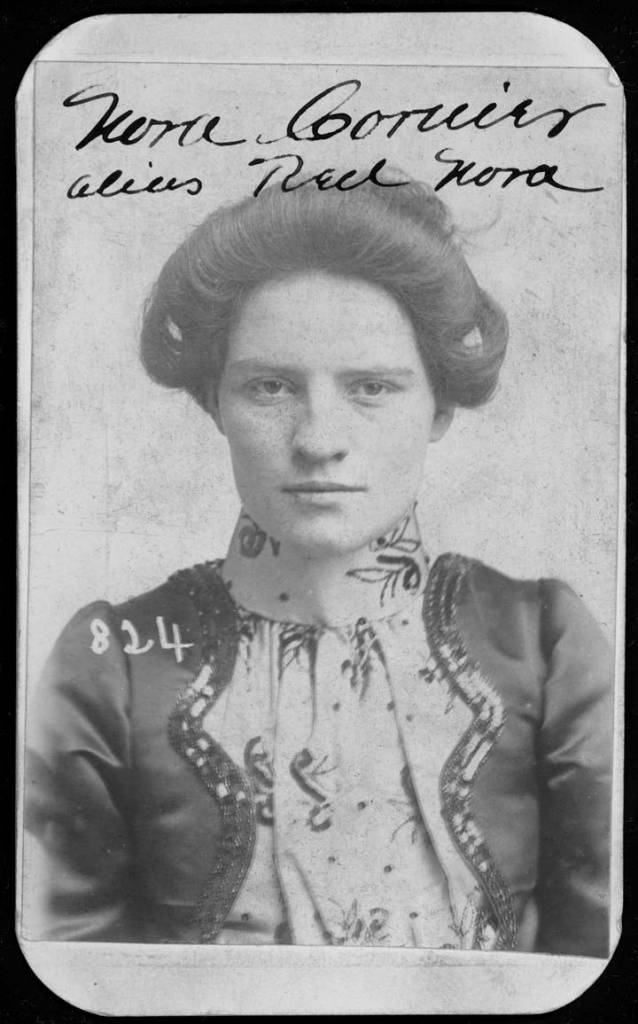
March 1901
Nora Courier was better known as “Red Nora.” On March 31, 1901, Omaha police arrested Nora for stealing a horse. According to police court records, she was 22 years old and stood five feet, three inches tall. She had slate blue eyes and a scar on the center of her forehead.
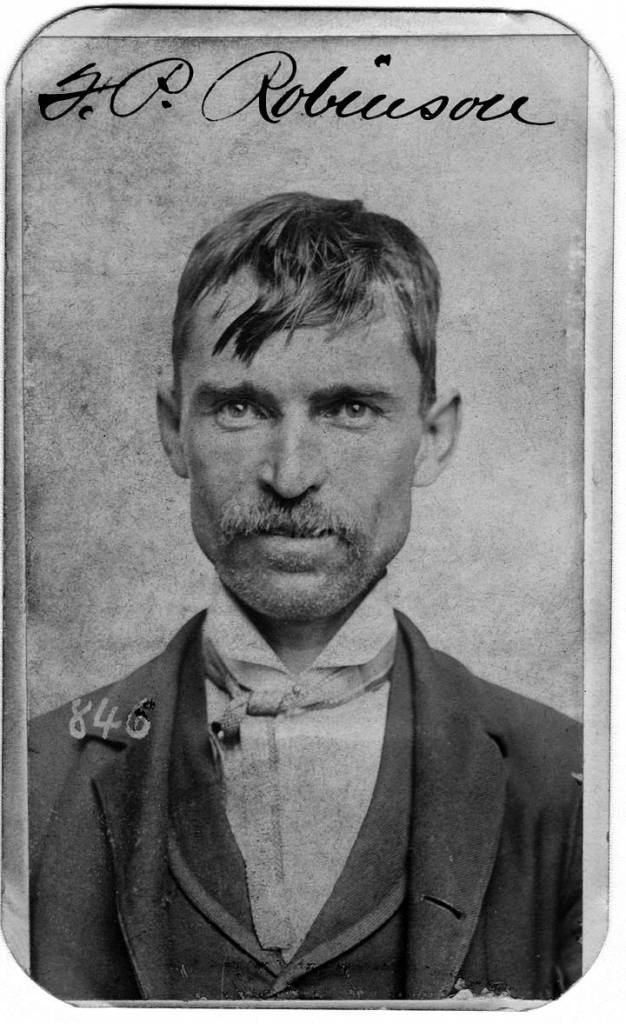
November 1901
Robinson attempted to pay for a glass of beer in an lower Douglas Street saloon in Omaha with a Mexican dollar, on Nov. 21, 1901. The beer cost only a nickel and Robinson received 95 cents of American money in change. At the time, the foreign dollar looked very similar to the American currency, but was only worth about 45 cents. This clever money scam left Robinson 50 cents and a glass of lager ahead of the game, until he was arrested.
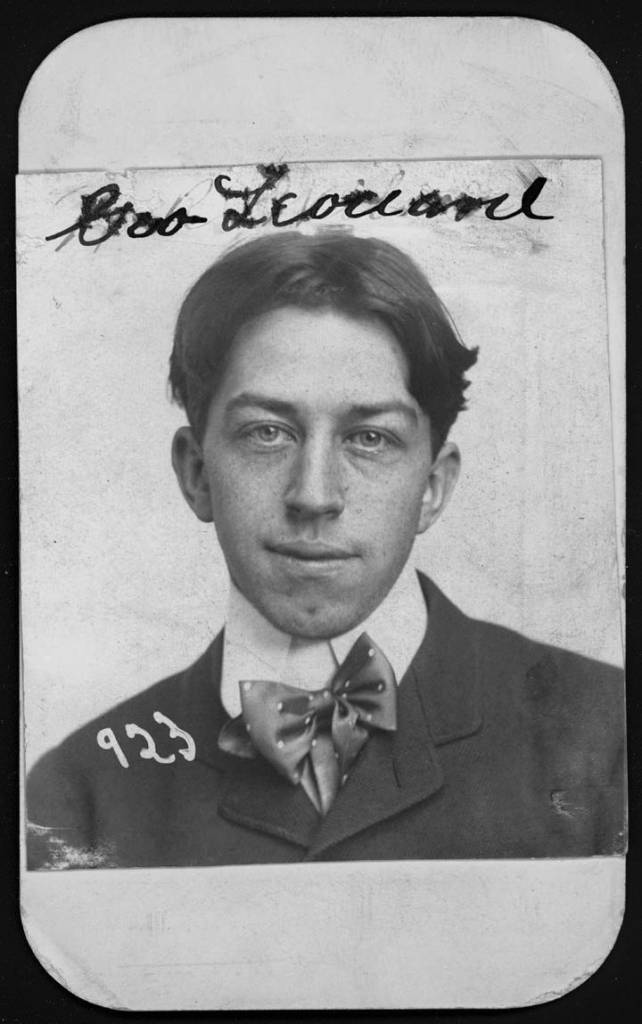
December 1901
George Leonard, an Omaha bookkeeper, was arrested for burglary on Dec. 23, 1901. His large silk bowtie sits slightly askew against his stiffly collared shirt.
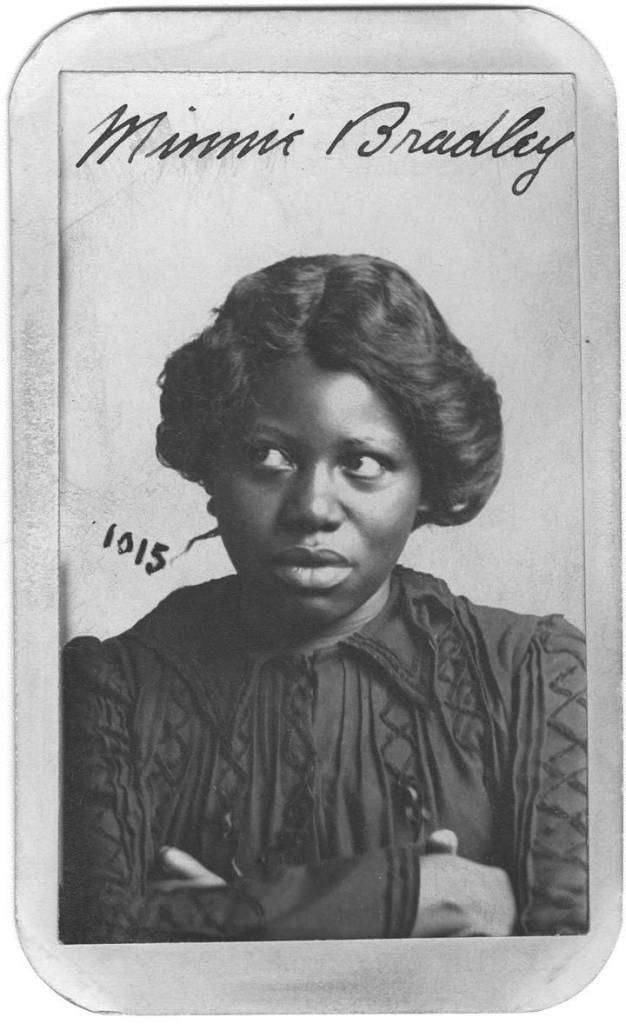
December 13, 1902
Minnie Bradley refuses to look at the camera in her Omaha Police Court mug shot. Minnie, 27, and 5’2″, was arrested in Omaha for larceny from a person. She listed her residence on North 11th Street in Omaha and her occupation as prostitute. The description also noted that Minnie wore a wig.
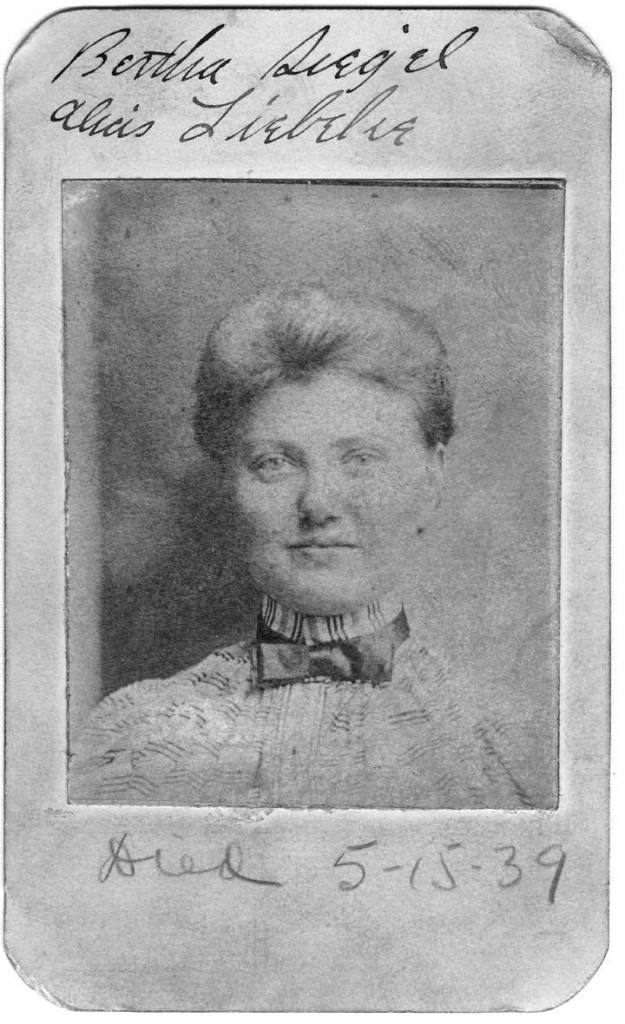
May 1903
Bertha Liebbeke earned the reputation of being one of the Midwest’s most notorious pickpockets. She would search out a well-dressed man, ideally with a diamond-studded lapel pin. Bertha would then “accidently” stumble into the helpless victim, pretending to faint into his arms. While he attempted to help her, Bertha would relieve the gentleman of his valuables or wallet. This trick earned her the nickname “Fainting Bertha.” Authorities from Illinois, Kansas, Iowa, Missouri and Nebraska knew Bertha and her tricks. Her aliases included Bertha Liebke, Jennie Jennings, Bertha Nixon, J. Armstrong, Carrie Jones, Bessie Milles, Menni Swilson and Bertha Siegel, the name on her Omaha Police Court mug shot.
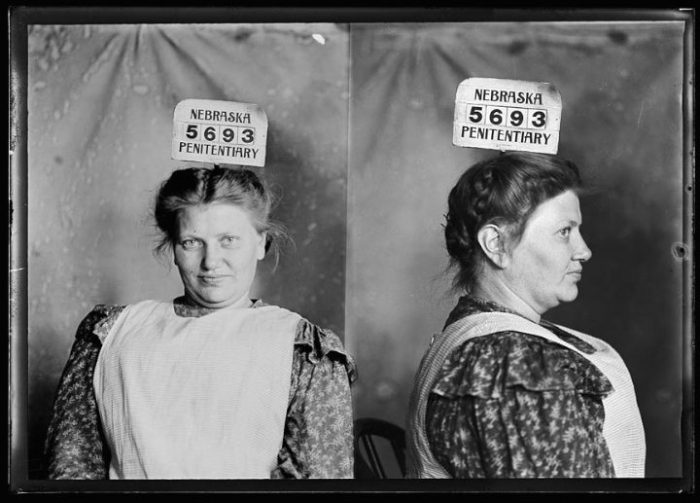
Bertha Liebbeke.
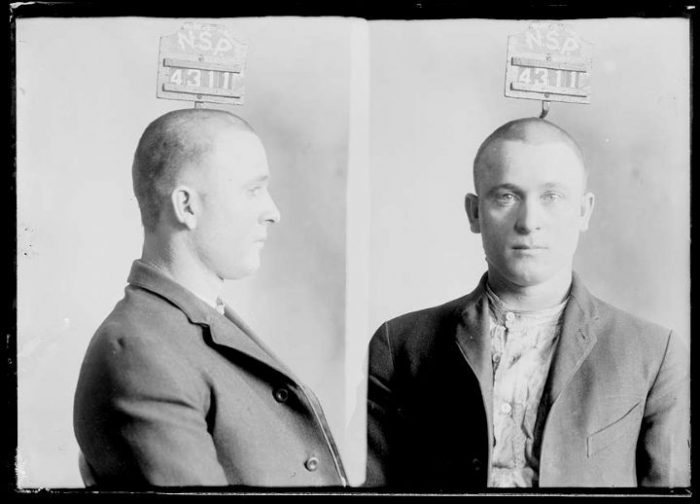
1904
On Nov. 1, 1903, Eli Feasel disappeared from his farm south west of Bostwick, Nebraska, about 15 miles east of Red Cloud. His housekeeper, Nannie Hutchinson (below), said he went to visit his son in Kansas City. Feasel’s brother, Thomas, grew suspicious when inquiries found no trace of Eli. Investigation led to the arrest of the housekeeper and her 21-year old son Charles. With little evidence that a crime had been committed, they were released after their hearing. The following spring, a Mr. Stanley began farming Eli Feasel’s place. While working in a field, he found what appeared to be a newly opened grave. Upon close examination, authorities discovered a human hand, some hair from a man’s head, part of a coat with an empty whisky bottle in the pocket and other pieces of clothing. Authorities believed Charles Hutchinson had seen Mr. Stanley plowing the field where the grave was later discovered. Charles began to act suspicious. On May 6, he rented a buggy. He said was going to assist in taking the rig to Starke Ranch at Amboy, about five miles east. The next morning, Charles returned the rig to the livery stable in Red Cloud and paid the usual fee to Amboy. The team of horses used by Charles appeared to have had a longer drive than a trip to Amboy. Stable workers also noticed a terrible stench emanating from the rented buggy and cushions. They paid little attention to it until Mr. Stanley discovered the open grave on the Eli Feasel’s place. With the new evidence, authorities quickly rearrested Charles and his mother Nannie. Authorities believed that on the night Charles rented the buggy, he and his mother returned to the site where they had hidden Feasel’s body in order to move the remains. The Hutchinson’s had left telltale clues behind them: footprints of a man and woman corresponding to their shoe sizes. At trial, the Hutchinson’s were found guilty of second-degree murder.
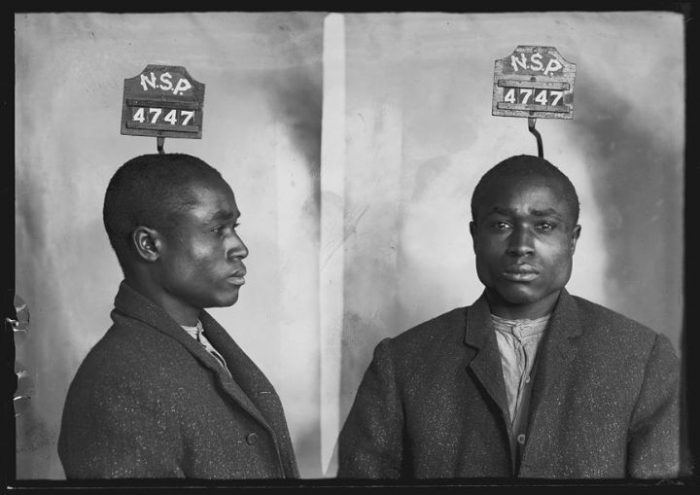
1906
On the evening of May 13, 1906, a violent confrontation occurred between the African American members of Troop B, Tenth United States Cavalry Regiment, and the townspeople of Crawford, Nebraska. A year before, Crawford Marshal Arthur Moss and Sergeant John Reid of Troop B had come close to blows after a July 4 horse race. Animosity between the two men continued. On the evening of May 13, Moss was sent to break up a soldier’s beer party near the city park on the west edge of town. Moss ordered the party to quiet down or disperse. An altercation broke out between Moss, Reid and Pvt. Jordan Taylor, also from Troop B. During the brief scuffle, Reid shot Moss with a .38-caliber revolver. Reid and Taylor fled into town and took refuge at the home of Edna Ewing, an elder black resident. While making their escape, the soldiers were followed and fired upon by several civilians. Art Moss died shortly after being shot. As a crowd gathered at the Ewing house, Taylor suddenly bolted and ran towards Fort Robinson. Before getting very far, he was fatally wounded. Reid was captured and taken under guard to the city jail. Rumors spread through Crawford that solders from Fort Robinson had threatened to storm the jail and free Reid. City officials feared a civilian mob might seize and lynch the prisoner. So, they decided to move Reid to the Chadron jail for safety. Before he could be transported, word came from the fort that several men and rifles from Troop B were missing. Colonel Augur quickly sent Troops I and K into town to prevent further violence. Soldier guards surrounded the jail. Tensions remained high into the next day. The seven men who were reported absent from the B Troop barracks were placed in the post guardhouse and 14 rifles were found concealed near the town limits. Reid was moved to the Chadron jail. He was eventually tried and convicted of manslaughter for the death of Arthur Moss and sentenced to seven years at the Nebraska State Prison.
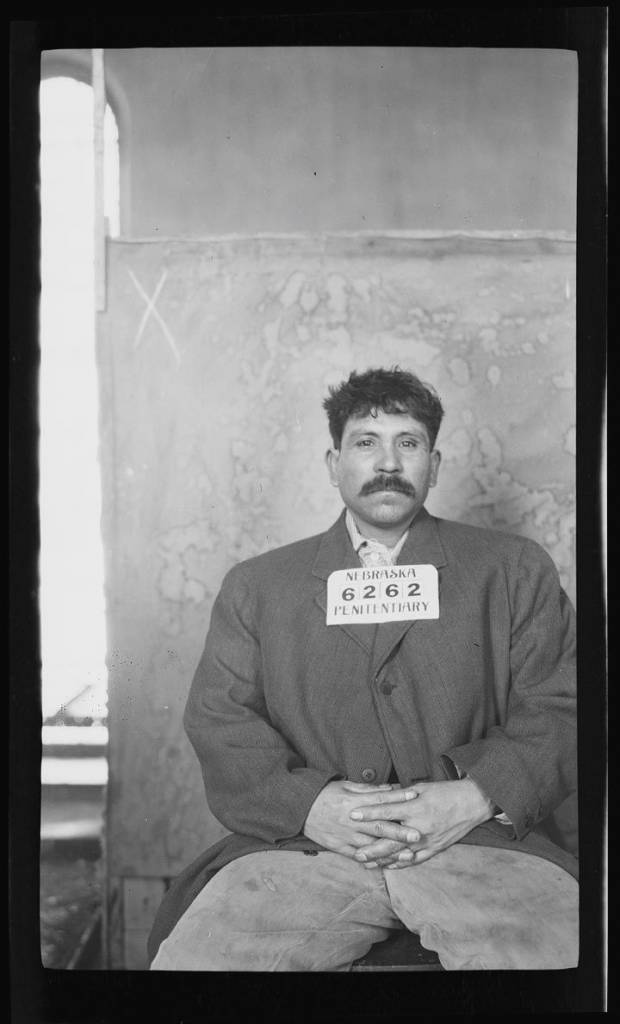
February 1914
Alberto Interciago was sentenced to one to 20 years at the Nebraska State Prison for “assault to wound” in February 1914. In the first photograph, Interciago sports a thick mustache popularized by rebel leaders Emiliano Zapata and Pancho Villa during the Mexican Revolution, 1910-1920. The second set of mug shots show Interciago after his hair and mustache were shaved.
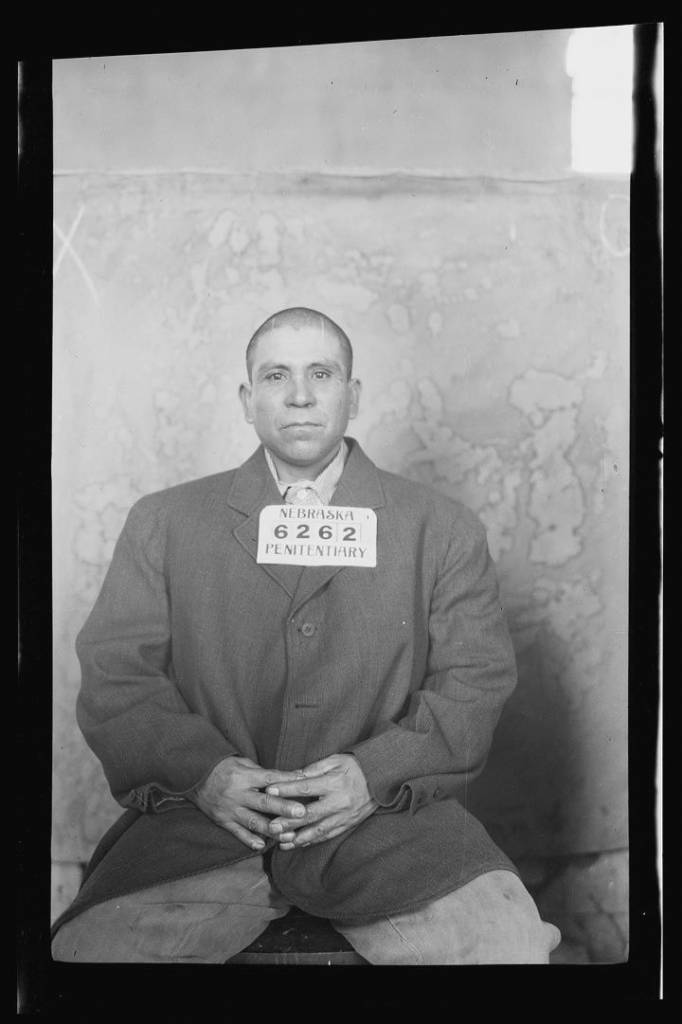
February 1914
Alberto Interciago
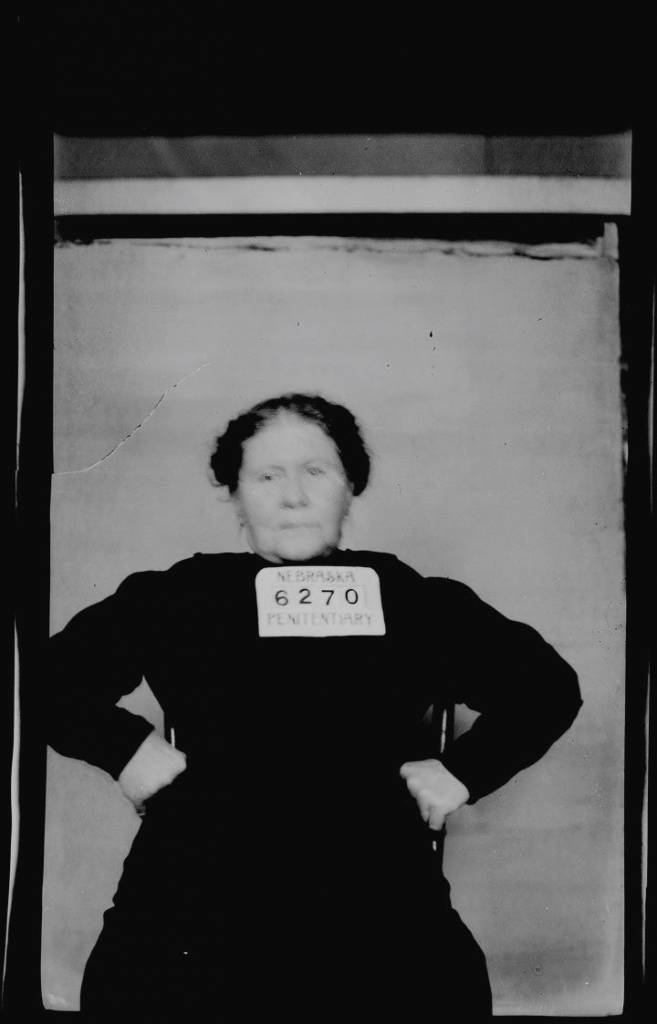
March 1914
Nebraska State Prison. Jennie Lester strikes a defiant pose in her mug shot. Lester was arrested in Phelps county for enticing to illicit intercourse in March 1914. She was sentenced to one to three years in the Nebraska State Prison.
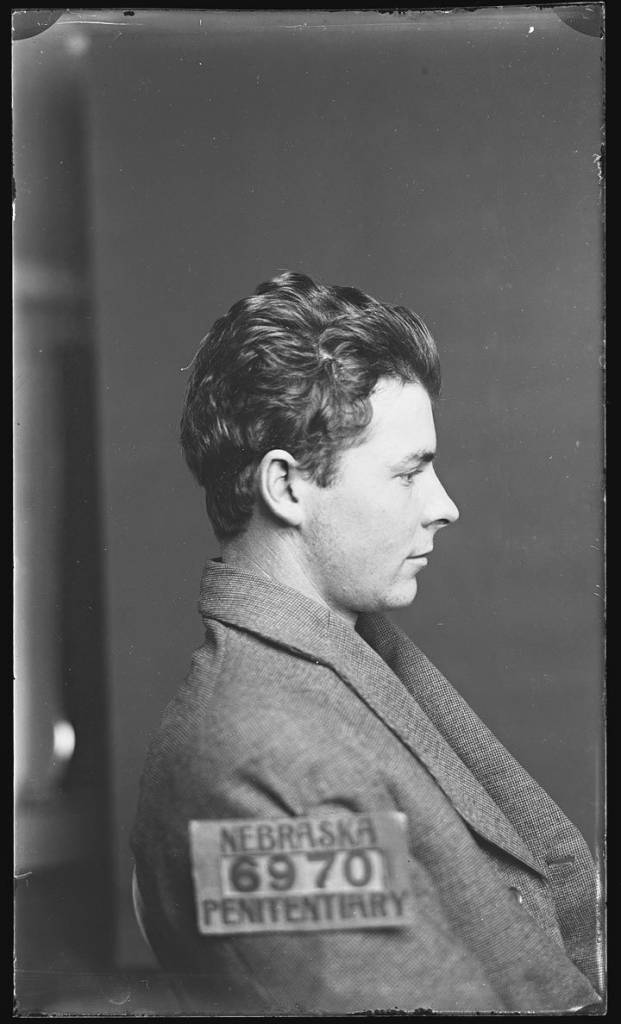
1916
In November 1916, Shock was sentenced to two years at the Nebraska State Prison for grand larceny. According to his prison records, he enlisted in the United States Army shortly after his release in February 1918 to serve in World War I.
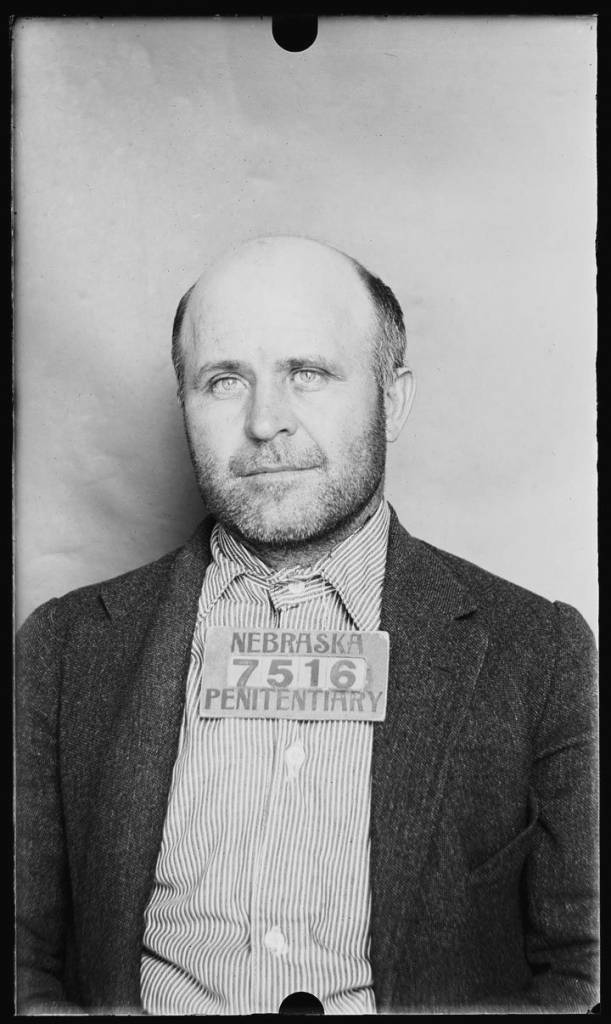
December 1919
Nebraska’s prohibition law went into effect on May 1, 1917, outlawing the manufacturing and sale of liquor. Soon after Nebraska jails began filling with liquor law violators. William H. Lee was sentenced to six months to two years in the Nebraska State Prison for bootlegging in Hitchcock County, in December 1919. “Bootlegging” is the illegal business of transporting alcoholic beverages. According to his official file, prison authorities granted Lee a furlough to visit his terminally ill wife. He returned to prison and was released July 4, 1921.
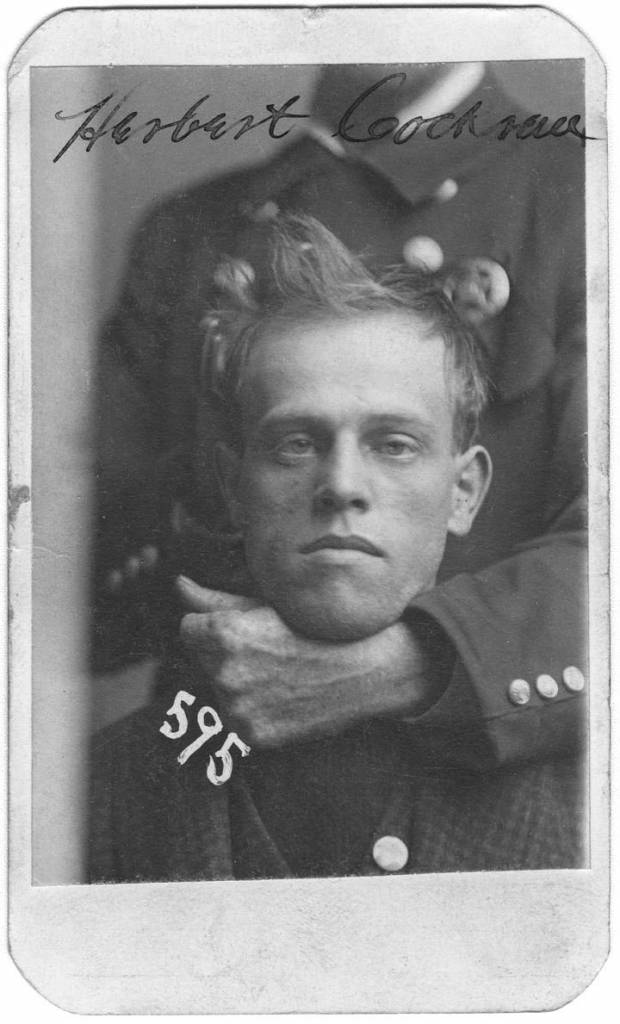
November 1899
An unidentified member of the Omaha police force holds Herbert Cockran in a headlock during his mug shot. Cockran was arrested on Nov. 24, 1899, for burglary. A tailor from Fairmont, Nebraska, Cockran had a slightly stooped build with a fair complexion and his eyebrows met at the root of his nose, according to the police description.
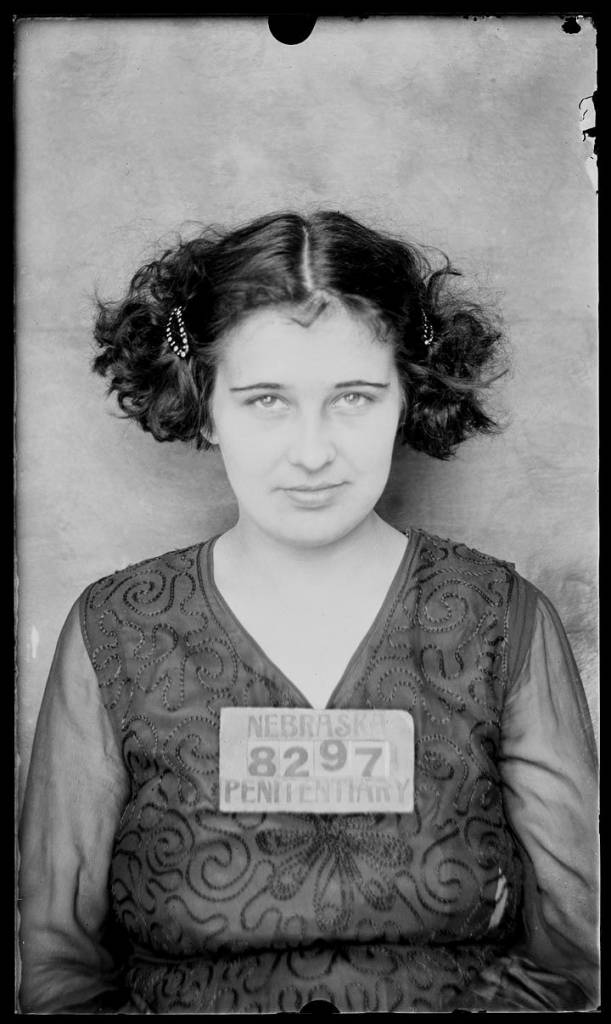
Ruby Fox and Myrtle Hetrick (below) met while incarcerated at the State Reformatory for Women in York, Nebraska. Ruby was serving time for breaking and entering, and Myrtle for vagrancy. Unhappy with their treatment, Ruby and Myrtle engineered an escape. With the aid of an unnamed man, the two women fled Nebraska in an automobile. Authorities in Casper, Wyoming captured the fugitives. Upon their return to Nebraska, Ruby and Myrtle requested to go to the Nebraska State Prison rather than return to the woman’s reformatory in York. They received their wish and were sentenced to one year at the Nebraska State Prison for their escape.
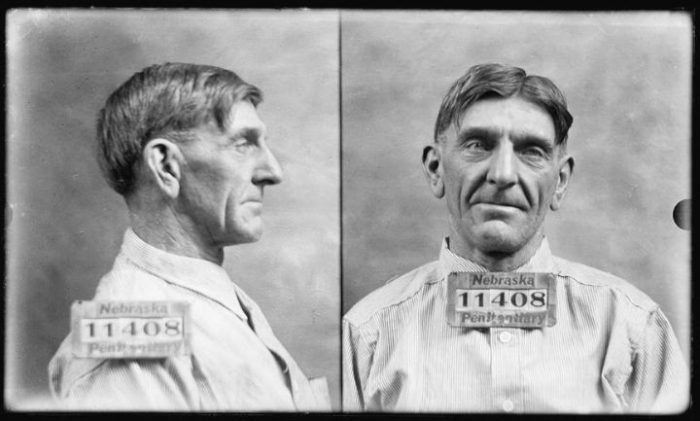
931
Jake Vohland (below, shaved) attempted to steal chickens from Mr. and Mrs. Stubblefield. The Stubblefields, however, had devised an ingenious homemade burglar alarm to protect their large chicken farm in Gibbon. They placed a mousetrap near the door of the chicken barn that rang bells in both their living room and bedroom. Vohland unknowingly set off the burglar alarm on a dark night in March 1931. The alleged thief ran out of the chicken house refusing to stop when Mr. Stubblefield cried halt. In his attempt to flee the scene, the alleged thief dropped part of his booty and escaped with only 10 chickens at a value of over $5. In his haste, the burglar did not stop for his car and made his getaway on foot. Mr. Stubblefield parked near the abandoned car and notified the sheriff. The sheriff quickly determined the car belonged to Vohland and proceeded to his home. Vohland was placed under arrest despite his claims that the car was stolen by someone else for the purpose of the chicken house raid. The jury did not believe Vohland’s story. He was found guilty of theft and sentenced to one year in the Nebraska State Prison.
via Flashbak




